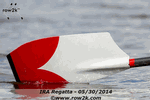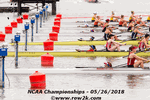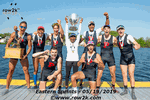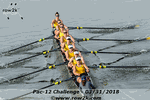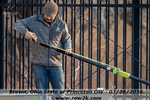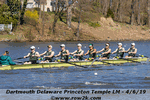Training Part 1 - Aspects of a Successful Training Program
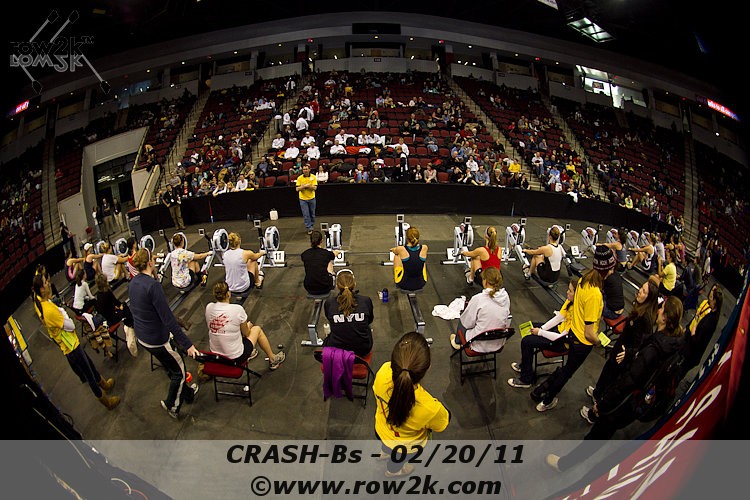
Following the cancellation of the 2020 spring racing season, row2k solicited the collegiate coaching community to engage in a variety of high-level topics within the profession. We submitted over sixty questions across a dozen topics and thank the coaches and staffs that found time to contribute their thoughts during this stressful time.
This week we focus on the topic of Training with the following question:
WHAT ARE SOME OF THE MOST IMPORTANT ASPECTS OF A SUCCESSFUL TRAINING PROGRAM?
CAMPBELL WOODS – MARIST MEN
The ultimate goal of any program is to bring your athletes to the start line with their best possible peak performance on championship weekend. There are lots of ways to approach this and it is a long season. We make adjustments to our program every season based on the outcomes we saw the previous year and we do seek some input from the athletes about how they are feeling/progressing. We have important periods of high load and the athletes will feel beat up by design and at those times we try to communicate that and rally the troops to pound out the work together. I think that rest or recovery is a big new buzz word in athletics in general and we are all learning that well recovered athletes perform better.
HEATHER BARNEY – TRINITY WOMEN
In my experience, the single most important aspect of a successful training program is that there’s buy-in from the student-athletes, which means that it needs to be a plan that they find interesting, challenging, and realistic to their academic and other commitments. The “perfect” training plan isn’t worth the paper it’s written on if your rowers aren’t able or willing to execute it at a high level. I would much rather have a program that is 75% “correct” from a physiological perspective but that my athletes are bought into executing at 100% than something that is 100% “correct” but only gets executed at a 75% level (or less…).
COLIN FARRELL – PENN LIGHTWEIGHT MEN
We take a really practical approach to things here. The most important aspects for me would be:
1 – A program that helps you reach your goals.
2 – A program that your team can actually do!
3 – A program that builds the team, not just the individual.

Anyone can write up a program in a vacuum and it can theoretically be perfect, but if it’s not grounded in the reality of what the athletes can actually achieve, then it’s not going to be successful. You’re always trying to hit that sweet spot of pushing the athletes but maintaining sustainability so you can keep moving forward and improving over time. Some other key features for me would be some room for individual personalization, the ability to adjust the program as you go based on what is happening, and the ability for a program to address weaknesses of the individual and the team.
For us at Penn in the Ivy League, there are also a fair number of rules surrounding our total amount of practice and how much the coaches can require. This changes throughout the year, so I think that any training program also has to be in the context of the environment and what the whole year looks like. So, at any given moment in a training program, the athletes should understand what you’re doing at that given period, but also how it all fits into the bigger picture of the year and their four years.
I think one of the challenges in training rowers is that we’re trying to get a lot of things done all the time. We want to develop endurance and overall aerobic capacity. We also need to work on speed, anaerobic ability, and lactate tolerance. Then, you need to work skill and boat moving ability. Plus, we have race-specific skills that we want to address (starts would be a good example here). There are only so many sessions and hours, so I think a big key of programming in rowing is creating balance and helping the team get prepared for the competition. Ultimately at the starting line, you want your crew to feel confident that they’re well prepared and are ready to go fast! This goes back to the adaptability of the programming though – preparation means different things at different times for the crew.
The third item above on teamwork would be the last thing for me. The ultimate goal is to work towards going as fast as possible as a crew. So, the program should also take the squad towards a collective idea of how we are trying to make speed over the 2k distance. It is about individuals improving their physiology and skills, but also the team improving their understanding of how we’ll try to win the race. Getting everyone on the same page, getting the coxswain to lead that charge during practice and the races, and having everyone respond appropriately is key. And that takes time to develop, but if the training program is working, then that is happening as we go.
GABE WINKLER – OREGON STATE MEN
The idea is to get faster. The erg is an easy and very specific tool to measure if you are in fact, getting faster. Everyone has a number and the goal is to better that number. We race a 2000m distance. The erg can mimic this distance very well and is a very good measure of the success of all of the training.
ETHAN SHOEMAKER – STETSON
I am going to be heretical here, and every collegiate coach across the country is probably going to laugh at their computer screens when they read this, but I don’t believe in periodized training as I understand it. I was talking to one of my mentors once about periodized training. This is a guy who comes from the medical world and knows a lot more about the human body than I ever will. I told him I was struggling to understand Tudor Bompa’s periodized training methodology because it seemed too complicated to be applicable in a sport such as rowing. He said, “that’s because it is.”
So, he helped me build a training plan then that I pretty much still use today. We do a vast amount of volume at low intensity and we sprinkle in very high intensity work sparingly. Our strength coach puts these guys through a similarly simple lifting program off the water. Then stretch, eat and repeat. I find the most important aspects of a training plan is not that it is hitting the right ratios, or the cycles line up just right. The most important part is that the athletes feel good about what they are doing and are getting faster. So far that approach has worked pretty well for us.
ALICEA STRODEL – MINNESOTA WOMEN
Knowing the academic calendar and understanding when the academically heavy weeks are is key to creating a program that doesn’t overstress the athlete during those times. Additionally, having the right ratio of hard and easy days is probably what we are all trying to balance.
JOHN BOYD – IONA WOMEN
It’s important to consider the time of year and what you’re trying to achieve. It’s equally important to explain the training program to the athletes. I’m a big believer in our athletes understanding ‘why’ instead of just telling them to ‘do’ because ‘I said so’.
LEE RUMPF – GEORGETOWN LIGHTWEIGHT MEN
A successful training plan is first and foremost backed by sound research, and not the “I heard they train like this or do X workout at X college so let’s just do that” type of research. There must be a reason for doing every single workout that we do from a scientific perspective. There’s no physiological benefit in going out there and just doing battle paddle every day. That’s how athletes plateau and decline. Our goal is to train smarter, so we have certain metrics that we measure and monitor every single day and throughout every workout to ensure that our athletes are training in the correct zones all the time.

Second, a successful training plan allows for athletes to improve different areas of performance throughout the year. A lot of improvement in a small amount of time is not a sustainable way to approach training. We would much rather have a guy go 6:10 in March than go 6:10 in November. If that athlete goes 6:10 in November, there is very little chance that he can improve on, or even maintain, that level of fitness during March and onwards into the racing season. It’s not impossible, it’s just a difficult feat. We write the training plan to have certain periods throughout the annual plan where athletes have performance peaks and valleys. Athletes do not continue to improve when presented with the same or a similar stimulus throughout a macrocycle, so our annual periodization model reflects that idea.
Third, a successful training plan changes for individual athletes CONSTANTLY based on their feedback and performance. Every athlete is different and there is no one size fits all solution to training. We take every individual athlete’s feedback and performance into account. So, if one athlete is struggling while the others are succeeding, the coaching staff talks it over with them and then we change that specific athlete’s training plan to allow him to sync up again with the rest of the team and fall back into the cycle.
Since changing our training plan approach at the beginning of this year, our coaching staff has been able to produce the fastest ergs in Georgetown Lightweight Rowing history by quite a large margin. While we are saddened that we didn’t get a chance to show the rest of the league our efforts, we find solace in the fact that we took a new approach to training and it paid off handsomely.
BART THOMPSON – ADRIAN
I think you need to have a clear vision for what you’re trying to achieve at any given time. Are you building strength? Developing endurance? Peaking for a 2k? All of those are important. You also need to have athlete buy-in. The rowers need to understand and believe in the plan.
ERIC GEHRKE – GEORGE WASHINGTON MEN
Some of the most important aspects of a successful training program are a balance between training and recovery, a structure based around the singular end goal (there can only be one main goal), and the flexibility and adaptability needed to handle team feedback and physical feedback to build around the bodies being asked to do the training.
If you enjoy and rely on row2k, we need your help to be able to keep doing all this. Though row2k sometimes looks like a big, outside-funded operation, it mainly runs on enthusiasm and grit. Help us keep it coming, thank you! Learn more.
Comments | Log in to comment |
There are no Comments yet
| |
- Bont Rowing
- Calm Waters Rowing
- Concept 2
- Craftsbury Sculling
- The Crew Classic
- CrewLAB
- Croker
- Durham Boat Co.
- Empacher
- Faster Masters
- Filippi
- Fluidesign
- h2row.net
- HUDSON
- Live2Row Studios
- Nielsen-Kellerman
- Oak Ridge RA
- Peinert Boat Works
- Pocock Racing Shells
- Race1 USA
- RowKraft
- Rubini Jewelers
- Vespoli USA
- WinTech Racing
- Bont Rowing
- Calm Waters Rowing
- Concept 2
- Craftsbury Sculling
- The Crew Classic
- CrewLAB
- Croker
- Durham Boat Co.
- Empacher
- Faster Masters
- Filippi
- Fluidesign
- h2row.net
- HUDSON
- Live2Row Studios
- Nielsen-Kellerman
- Oak Ridge RA
- Peinert Boat Works
- Pocock Racing Shells
- Race1 USA
- RowKraft
- Rubini Jewelers
- Vespoli USA
- WinTech Racing




